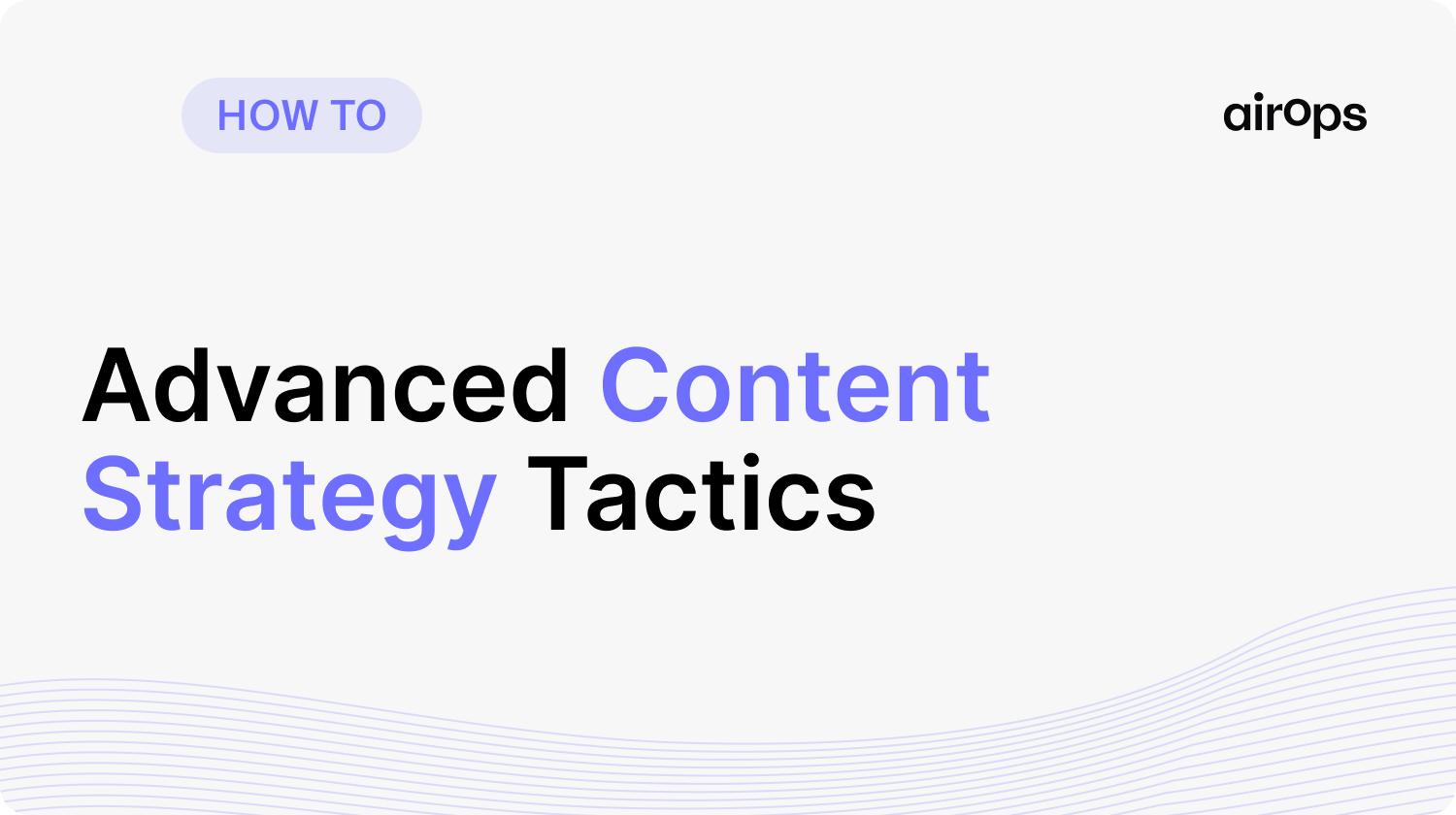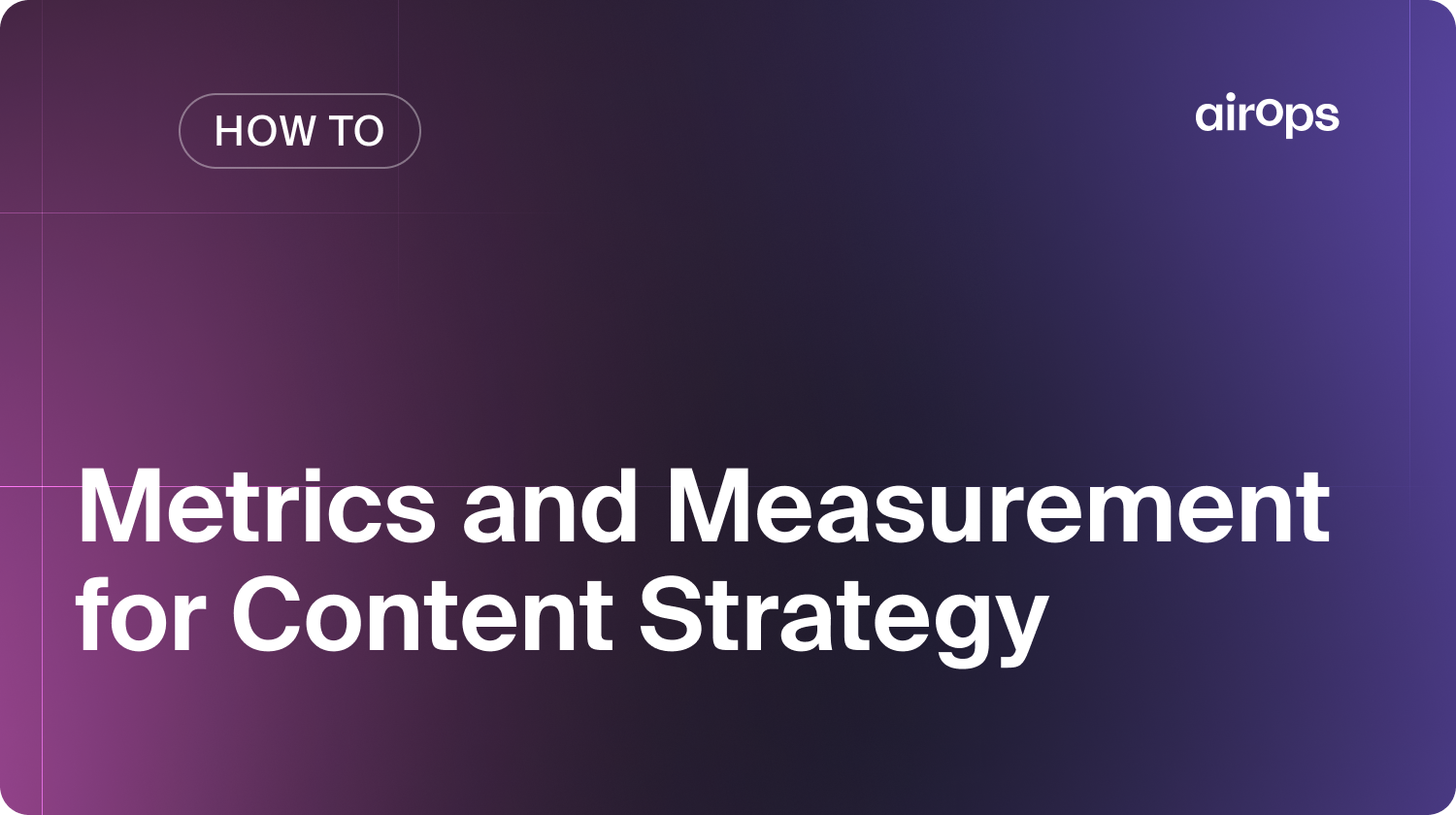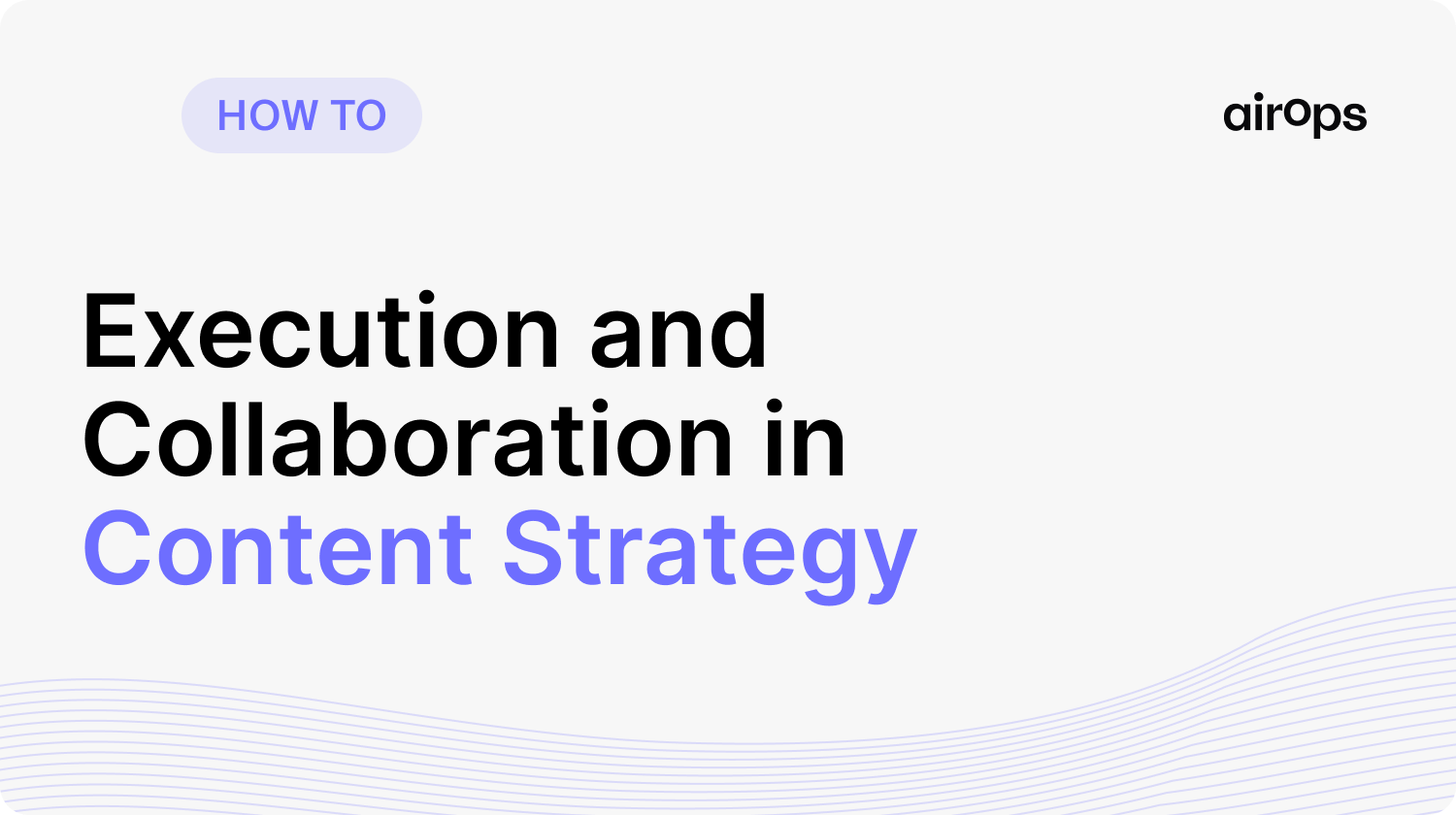8 Questions Every Growth Leader Should Ask to Improve Their Content Strategy

These eight questions help you spot what’s slowing your team down and how to fix it fast.
- Find the leaks: Identify thin content and tough keywords that aren’t worth the effort.
- Plan for demand: Group topics, track seasonality, and use AI to catch opportunities early.
- Run with speed: Move faster with topic velocity insights, smart launch planning, and connected workflows.
The best content teams aren’t working harder. They’ve built machines that do the heavy lifting for them.
Your content strategy is either compounding or collapsing.
Most teams still build content through manual planning, disconnected tools, and static calendars. Meanwhile, top performers are running AI-assisted workflows that identify gaps, predict demand, and refresh content automatically before rankings dip.
This guide breaks down the eight questions every growth leader should ask to scale output with precision and impact. You’ll learn how to spot thin content, plan for demand cycles, cluster intelligently, and use automation to connect every workflow directly to pipeline results.
1. How Do I Identify Thin Content That Needs To Be Expanded?
Identifying thin content starts by analyzing pages with high impressions but low engagement metrics. Look for content under 500 words, pages with high bounce rates, and articles lacking comprehensive topic coverage. Compare your pages against top-ranking competitors to spot missing sections and depth gaps.
Key indicators of thin content include:
- Low dwell time: Pages where visitors spend less than 30 seconds indicate insufficient value or incomplete answers to search queries.
- Missing subtopics: Content that covers only surface-level information without addressing related questions users commonly search for.
- Outdated information: Pages with statistics or examples older than 12 months that no longer reflect current industry standards.
Content audits should prioritize high-traffic pages first for maximum impact. Regular quarterly reviews ensure your content maintains competitive depth and authority. A thorough content audit process helps identify not just thin content, but also reveals new opportunities for expansion based on search trends and user behavior patterns.
2. How Do I Group Related Queries Into Themes For Content Planning?
Grouping related queries into themes creates comprehensive content clusters that establish topical authority. Start by extracting search console data and organizing keywords by user intent. Map similar questions to pillar pages and supporting content that addresses every angle.
Theme grouping strategies include:
- Intent mapping: Categorize queries by informational, commercial, navigational, and transactional intent to align content with user journey stages.
- Topic modeling: Use semantic analysis to identify natural keyword clusters based on meaning rather than exact match variations.
- Hub architecture: Build pillar pages around broad themes with supporting articles targeting specific long-tail variations and subtopics.
Properly grouped themes help you create interconnected content that search engines recognize as authoritative. This approach improves rankings across entire topic clusters rather than individual pages. Implementing proven content strategy frameworks ensures your theme grouping aligns with both user intent and business objectives.
3. How Can I Use Keyword Clustering To Guide Content Planning?
Keyword clustering guides content planning by revealing which terms to target together on single pages. Group keywords with similar intent and search results to maximize ranking potential. Use clustering data to determine content depth requirements and internal linking strategies.
Clustering best practices include:
- SERP similarity analysis: Keywords showing 40% or more overlapping results should typically be targeted on the same page.
- Volume prioritization: Build clusters around high-volume head terms supported by relevant long-tail variations for comprehensive coverage.
- Content mapping: Assign each cluster to specific pages, ensuring no cannibalization while maximizing topical coverage across your site.
Effective clustering prevents keyword cannibalization while ensuring comprehensive topic coverage. Regular cluster analysis helps identify new content opportunities as search behavior evolves.
4. How Can I Use Topic Velocity To Guide Editorial Decisions?
Topic velocity guides editorial focus by measuring how quickly topics gain search interest and competitive attention. Track emerging trends, monitor competitor publishing patterns, and identify rapidly growing topics before markets saturate. Prioritize high-velocity topics that align with your brand expertise and audience needs.
Velocity tracking methods include:
- Trend analysis: Monitor search volume changes week-over-week to spot topics gaining momentum before they peak in popularity.
- Competitor tracking: Identify topics where competitors are rapidly publishing new content, signaling market opportunity or threat.
- Social signals: Track social media engagement and discussion growth rates to predict which topics will drive search demand.
High-velocity topics offer first-mover advantages when you publish authoritative content early. Balance trending opportunities with evergreen content to maintain consistent traffic growth. For instance, Webflow 5x'd their content results that prioritized high-velocity topics alongside evergreen content updates.
5. How Do I Plan For Seasonal Content Demand?
Planning for seasonal content demand requires analyzing historical traffic patterns and search trends 3-6 months ahead. Create content calendars that align production schedules with peak search periods. Build evergreen frameworks that you can quickly update with current data when demand spikes.
Effective seasonal planning involves:
- Historical analysis: Review past years' traffic data to identify predictable demand patterns and optimal publishing windows for maximum reach.
- Competitive monitoring: Track when competitors launch seasonal campaigns and identify content gaps you can fill during high-demand periods.
- Resource allocation: Schedule team capacity and budget specifically for seasonal content creation, leaving buffer time for optimization.
Start seasonal content production at least 60 days before peak demand periods. This timeline allows search engines to index and rank your content before traffic surges.
6. What Tools Help Manage Content Strategy And Calendar Workflows?
Managing content strategy and calendar workflows requires integrated tools that connect planning to execution. Modern content teams use platforms combining ideation, production, optimization, and measurement capabilities. Choose tools that automate repetitive tasks while maintaining quality and brand consistency.
According to McKinsey, generative AI could increase the productivity of the marketing function by 5–15% of total marketing spend. Leverage these gains by standardizing workflows and instrumenting content with clear KPIs so efficiency improvements translate into measurable impact.
Essential workflow tools include:
- Content intelligence platforms: Systems like AirOps that combine keyword research, content optimization, and AI production.
- Editorial management systems: Project management tools specifically designed for content teams with built-in approval workflows and deadline tracking.
- Performance analytics: Dashboards that connect content production to business metrics, showing which topics drive conversions and revenue.
The right tool stack eliminates manual handoffs between strategy and execution phases. Integration capabilities determine whether tools actually save time or create additional complexity. Following content calendar best practices helps teams maintain consistency while adapting to changing priorities and opportunities.
7. How Do I Structure A Content Strategy For A New Product Launch?
Structuring content strategy for product launches requires coordinated campaigns across awareness, consideration, and decision stages. Begin content production 90 days before launch to build organic visibility. Create educational content that addresses problems your product solves before promotional materials.
Launch content framework includes:
- Problem-awareness content: Articles addressing pain points and challenges your target audience faces, published 60-90 days before launch date.
- Solution comparison guides: Content evaluating different approaches to solving identified problems, positioning your product within the competitive landscape.
- Product-specific resources: Detailed features pages, use cases, and implementation guides published at launch to support buyer research.
Successful launch strategies build audience interest before revealing the product solution. This approach generates qualified traffic ready to convert when your product becomes available.
8. How Does Keyword Difficulty Play into Content Strategy?
Keyword difficulty determines resource allocation and timeline expectations for ranking success. High-difficulty terms require more comprehensive content, stronger link profiles, and longer ranking timelines. Balance your portfolio between quick-win low-difficulty terms and strategic high-difficulty targets.
According to Ahrefs, only 1.74% of newly published pages reach Google’s top 10 within a year, and 72.9% of pages in the top 10 are more than three years old. Use difficulty scores and competitive link benchmarks to set realistic time horizons and promotion plans for each target.
Difficulty-based prioritization involves:
- Resource matching: Allocate your best writers and most promotion budget to high-difficulty terms with strong business value.
- Timeline planning: Target low-difficulty keywords for quick traffic wins while building authority for competitive terms over time.
- Competition analysis: Study exactly what makes high-difficulty terms challenging and create content that exceeds current ranking standards.
Smart difficulty analysis prevents wasted effort on unwinnable keywords. Focus on terms where your domain authority and resources give you realistic ranking chances. Use these benchmarks to align expectations with stakeholders and to stage refreshes and link acquisition in phases.
Companies seeing real results from advanced content strategies understand the importance of systematic execution. Go Retail Group achieved a 150% reduction in SKU launch time and 13% increase in PDP conversion rates by implementing AI-powered workflows that automated their seasonal content updates. Their success came from combining strategic planning with scalable execution systems that maintained quality while dramatically reducing production timelines.
Executing advanced content strategies requires an approach that balances speed with quality.
- Automate repetitive tasks: Use AI workflows for research, optimization, and initial drafts while humans focus on strategy and creativity.
- Measure leading indicators: Track content velocity, coverage gaps, and share of voice rather than just traffic and rankings.
- Build modular content systems: Create reusable frameworks and templates that maintain consistency while accelerating production timelines.
- Connect content to revenue: Implement attribution tracking that shows which topics and formats drive pipeline and customer acquisition.
- Iterate based on data: Use performance metrics to continuously refine your strategy rather than following rigid annual plans.
Your Content Strategy From Planning to Pipeline
Manual content strategy execution limits your ability to compete effectively. AirOps transforms strategy into action through AI-powered workflows that connect planning directly to results.
- Use intelligent content planning tools that identify untapped opportunities and prioritize high-impact topics automatically.
- Scale production without sacrificing quality through modular workflows and brand-aligned AI systems.
- Track content velocity and coverage gaps in real-time to stay ahead of competitors.
Stop letting operational limitations constrain your content ambitions. Book a call to discover how AirOps accelerates advanced content strategies at scale.
Win AI Search.
Increase brand visibility across AI search and Google with the only platform taking you from insights to action.
Get the latest on AI content & marketing
Get the latest in growth and AI workflows delivered to your inbox each week




.avif)



